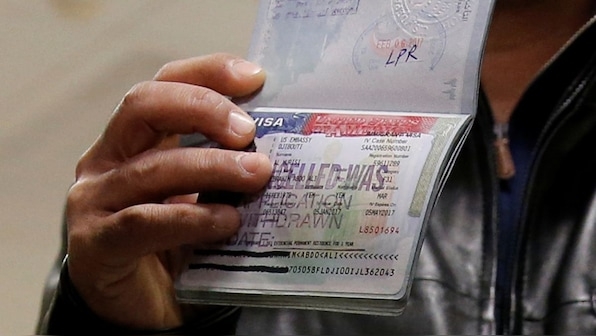Working in the U.S. as an international student can feel overwhelming at first, but it doesn’t have to be. I want to make it easy to understand what your options are and how to use them wisely. This guide breaks everything down starting with on-campus jobs, moving into CPT and OPT, and showing you how to turn those steps into a full-time opportunity after graduation. No complicated talk, just clear steps you can follow to make progress with confidence.
I’ve seen how the right job experience can open doors and build strong career paths, even while you’re still in school. With the right approach, you can earn some income, gain valuable work experience, and prepare for long-term opportunities after graduation. From understanding the rules to finding real ways to apply, everything you need to know is right here. Let’s walk through it together.
Start with On-Campus Jobs First
On-campus jobs are the easiest and fastest way for international students on F-1 visas to begin working legally in the U.S. These jobs are available from your very first semester and do not require approval from USCIS.

What qualifies as on-campus employment:
- Jobs located directly on your university campus or at an educationally affiliated off-campus location.
- Examples: library assistant, front desk worker, cafeteria staff, lab assistant, or research support roles.
Key rules:
- You can work up to 20 hours per week while school is in session.
- During holidays or school breaks, you can work full-time (more than 20 hours per week).
- You must maintain valid F-1 status.
- You don’t need to apply for any special work permit.
How to apply:
- Visit your school’s career services or student employment office.
- Check campus job boards or online portals like Handshake.
- Some jobs may require a resume and short interview.
Read: These 10 Canadian Companies Are Hiring Foreign Workers Like Crazy in 2025—Apply Now!
Use CPT for Off-Campus Work During School
Curricular Practical Training (CPT) allows you to work off-campus in a job directly related to your major, while you’re still enrolled in school. This work must be part of your academic program.
Eligibility requirements:
- You must have completed one full academic year (two semesters) in the U.S. on an F-1 visa.
- The job must be related to your major and either for academic credit or required by your degree.
- You need an offer letter before you can apply.
Authorization process:
- Request CPT authorization through your DSO (Designated School Official).
- Submit a job offer letter and course registration if it’s for academic credit.
- You’ll receive a new I-20 with CPT approval printed on it. No separate work permit is needed.
Work hours:
- Part-time CPT = up to 20 hours/week during the semester.
- Full-time CPT = more than 20 hours/week, usually during breaks.
Important tip:
- Don’t use full-time CPT for more than 12 months or you’ll lose eligibility for OPT later.
Read: Netherlands Work Visa for Immigrants: Get Started and Earn More in a Thriving Economy
Apply for OPT to Work After Graduation
Optional Practical Training (OPT) allows international students to gain real-world experience in their field after graduation. You get 12 months of work authorization with the possibility of a 24-month extension for STEM majors.

When to apply:
- As early as 90 days before your program end date.
- No later than 60 days after graduation.
Steps to apply:
- Request OPT recommendation from your DSO.
- Receive new I-20 with OPT recommendation.
- File Form I-765 to USCIS for your Employment Authorization Document (EAD).
- Wait for your EAD card before starting work (can take 1-3 months).
Types of OPT:
- Pre-completion OPT: Work before graduation, part-time only.
- Post-completion OPT: Work after graduation, full-time.
STEM OPT extension:
- Available to graduates with degrees in STEM fields.
- Adds 24 more months of work authorization.
- Requires employer to be part of E-Verify program.
Find Jobs That Can Sponsor You Long-Term
After OPT, many students aim to find employers who will sponsor an H-1B work visa. Planning ahead is key.
Where to look:
- Use job boards like MyVisaJobs, H1BGrader, or GoinGlobal.
- Attend school career fairs, networking events, and information sessions.
- Reach out to alumni working in your field.
- Check if the company has a history of hiring international graduates.
What to focus on:
- Build a strong resume that shows your practical skills.
- Apply for internships or co-op positions early during school.
- Practice interviewing and explaining your visa situation clearly.
Top industries for sponsorship:
- Tech, finance, healthcare, engineering, and research.
Read: Managing Time Zones and Flex Schedules: Remote Workers Guide to Staying Sane
Bridge from OPT to a Work Visa
Once on OPT, the goal is to secure a work visa like H-1B before your OPT ends.

Key work visas to explore:
- H-1B: Requires a job offer in a specialty occupation. Apply through the annual lottery.
- Cap-exempt H-1B: Jobs at universities or nonprofits not subject to the lottery.
- O-1 visa: For people with extraordinary ability in sciences, arts, or business.
- Green Card through employment: A long-term option if your employer supports sponsorship.
Timing tips:
- H-1B application window opens in March each year.
- Employers must register you with USCIS before the deadline.
- If you don’t get selected, use your STEM OPT extension or explore other visa options.
Stay Legal and Informed
Working in the U.S. as an international student involves rules. Staying informed keeps you safe and eligible.
Things to always do:
- Keep your I-20 and SEVIS records up to date.
- Report any change in address, job, or status to your DSO.
- Don’t work off-campus without written authorization.
- Keep track of deadlines for OPT, STEM extension, and H-1B filings.
Where to get help:
- Your DSO is your first contact for any work or immigration issue.
- Use official USCIS and school websites.
- For legal advice, contact an immigration lawyer.
Working in the U.S. as an international student isn’t as complicated as it might seem when you understand the right steps. From starting with on-campus jobs to using CPT for internships and OPT for real-world experience after graduation, each stage brings you closer to full-time work opportunities.
Stay informed about your visa options, keep track of important timelines, and take advantage of the resources your school offers. The more you plan ahead, the smoother your path will be. Use this guide as a starting point and keep moving forward your career in the U.S. can begin while you’re still in school.


